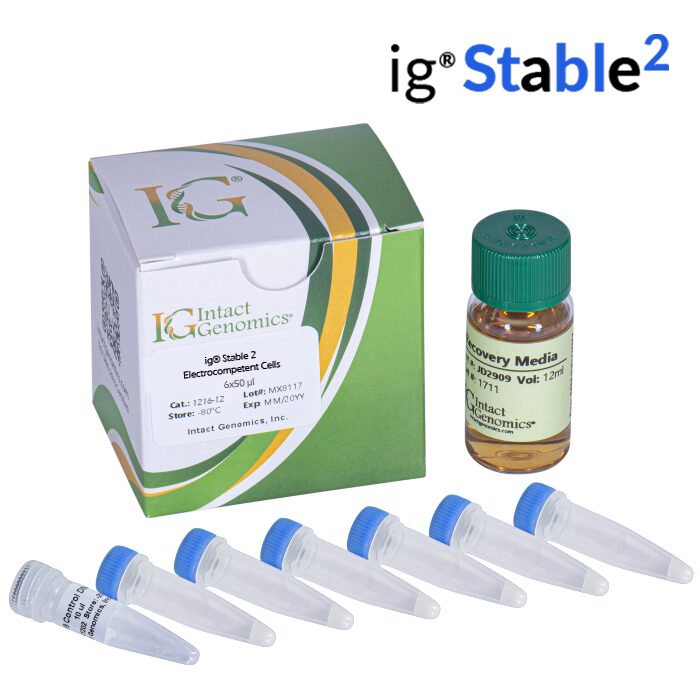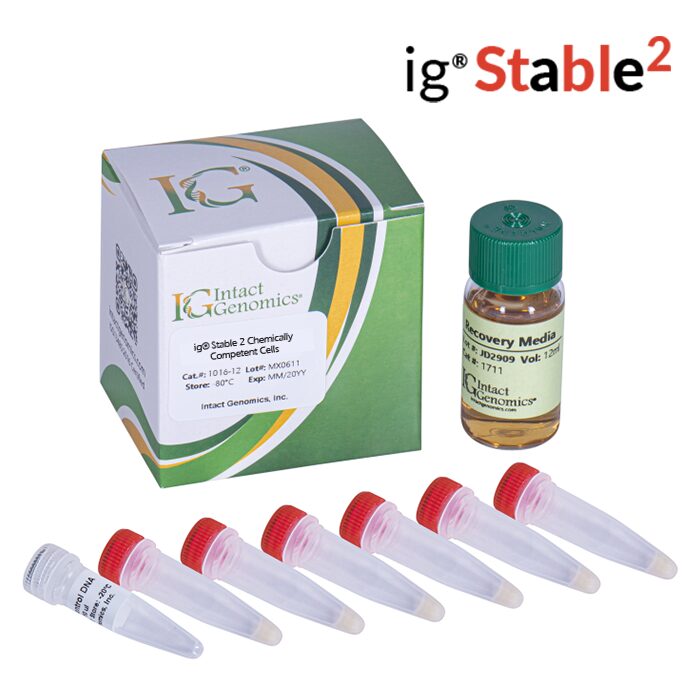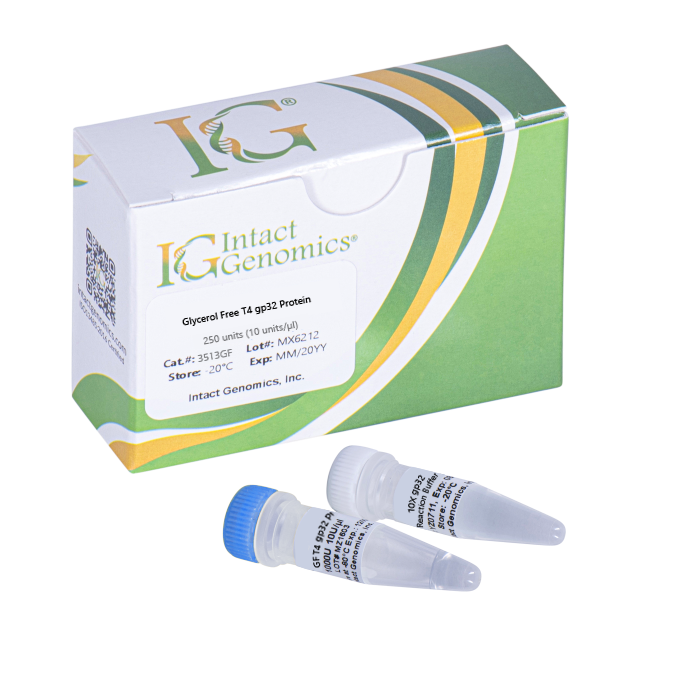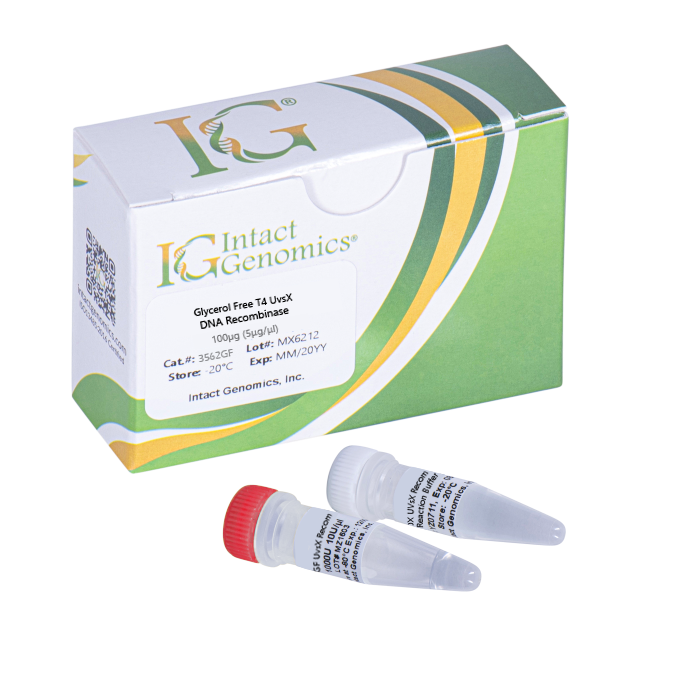T4 UvsY efficiently promotes the UvsX-catalyzed strand invasion reaction by recruiting to ssDNA–gp32 complexes, promotes the release of gp32, and favors the binding of UvsX.
T4 UvsY Protein
Price range: $255.00 through $1,345.00
Description
UvsY is the phage T4 recombination mediator protein, and structural and biophysical studies provide insights into its role in T4 homologous recombination. During T4 homologous recombination, the UvsX recombinase must compete with the prebound gp32 single-stranded binding protein for DNA-binding sites and T4 UvsY Protein stimulates this filament nucleation event (1). UvsY is a 15.8-kDa protein with properties that are consistent with its role as mediator; it stimulates the DNA-dependent ATPase activity of UvsX, lowers the critical concentration of UvsX that is required for activity, and promotes strand exchange (2, 3). UvsY efficiently promotes the UvsX-catalyzed strand invasion reaction by recruiting to ssDNA–gp32 complexes, promotes the release of gp32, and favors the binding of UvsX.
Protein Purity
The physical purity of this enzyme is ≥98% as assessed by SDS-PAGE with Coomassie® blue staining (Fig. 1).
Product Source
E. coli BL21 (DE3) strain expressing T4 UvsY gene with an N-terminal His-tag.
This His tag does not have any effect on UvsY activity.
Product Includes
UvsY protein
10X UvsY Reaction Buffer
1x UvsY reaction buffer composition
20 mM Tris-acetate
100 mM Potassium acetate
10 mM Magnesium acetate
1 mM DTT
pH 7.8 @ 25ºC
Storage Buffer
50 mM Tris-HCl
50 mM KCl
1 mM DTT
0.1 mM EDTA
50% Glycerol
pH 7.5 @ 25ºC
Storage Temperature
-20ºC
Quality Control assays
UvsY is free from detectable nuclease activities.
References
1. Beernink HT, Morrical SW. RMPs: Recombination/replication mediator proteins. Trends Biochem Sci. 1999;24(10):385–389.
2. Hashimoto K, Yonesaki T. The characterization of a complex of three bacteriophage T4 recombination proteins, uvsX protein, uvsY protein, and gene 32 protein, on single-stranded DNA. J Biol Chem. 1991;266(8):4883–4888.
3. Beernink HT, Morrical SW. The uvsY recombination protein of bacteriophage T4 forms hexamers in the presence and absence of single-stranded DNA. Biochemistry. 1998;37(16):5673–56813572 3575
Additional information
| µg | 100µg (2µg/µl), 500µg (2µg/µl), 1000µg (2μg/μl) |
|---|
Intact Genomics Concentration Determination Method
IG uses orthogonal, 3-part approaches to determine the enzyme concentration to provide you with consistent and reliable enzymes for your needs. The quantity of a protein sample is assessed using densitometry with polyacrylamide gel electrophoresis (PAGE), UV absorbance spectra of native protein, and using a protein standard assay such as bicinchoninic acid assay (BCA) using bovine serum albumin (BSA) as a standard (Figure 1).
Why does IG use all three approaches?
1. Each method above has limitations. The limitations include experimental noise, accuracy, and susceptibility to buffer and/or enzyme conditions.
2. Each enzyme has unique physical properties that make a single approach to analyzing proteins a challenge. Each enzyme has a different protein sequence, different requirements to be stable in solution, and different requirements to retain its maximal activity. These differences can interfere with or convolute results, especially when compared to other enzymes. When used together, however, each method provides the scientist with independent measures of both enzyme and buffer purity and quality.
 Figure 1: Enzyme quantitation methods used by IG. A) SDS-polyacrylamide gel electrophoresis. Ladder in 1st lane, 2 µg BSA (~67 kDa) as a standard in lanes 1-3, and IG enzymes (~40 kDa) in lanes 4-6. The yellow boxes are the areas evaluated by densitometry. The integrated band intensities of IG enzymes are compared with integrated band intensities from BSA to assay concentration. B) UV spectrum of a clean IG enzyme with protein peaks at 230 nm and at 280 nm. An extinction coefficient at 280 nm is typically used to quantify protein using these spectra with buffer subtraction at 330 nm. C) BCA standard curve for BSA. The curve is used to calculate an IG enzyme concentration using BSA as the standard.
Figure 1: Enzyme quantitation methods used by IG. A) SDS-polyacrylamide gel electrophoresis. Ladder in 1st lane, 2 µg BSA (~67 kDa) as a standard in lanes 1-3, and IG enzymes (~40 kDa) in lanes 4-6. The yellow boxes are the areas evaluated by densitometry. The integrated band intensities of IG enzymes are compared with integrated band intensities from BSA to assay concentration. B) UV spectrum of a clean IG enzyme with protein peaks at 230 nm and at 280 nm. An extinction coefficient at 280 nm is typically used to quantify protein using these spectra with buffer subtraction at 330 nm. C) BCA standard curve for BSA. The curve is used to calculate an IG enzyme concentration using BSA as the standard.






